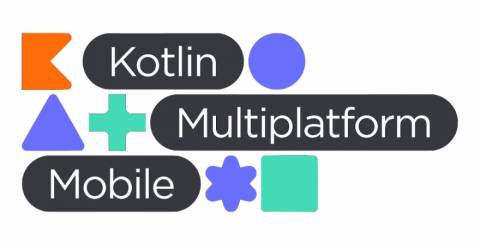Leveraging Kotlin Multi-platform for Cross-Platform Business Solutions

With the rise of mobile devices and the ever-growing demand for cross-platform solutions, businesses are constantly seeking efficient ways to develop applications that can be used on multiple platforms. This is where Kotlin Multi Platform comes into play. Kotlin Multi-platform is a versatile technology that allows developers to write code once and deploy it on various platforms such as Android, iOS, and web.
This revolutionary tool has gained immense popularity in the tech community, and for good reason. Its ability to streamline the development process and reduce maintenance costs makes it a valuable asset for businesses looking to expand their reach and cater to a wider audience. In this blog, we will explore the benefits and functionalities of Kotlin Multi-platform and how it can be leveraged for cross-platform business solutions.
Understanding Kotlin Multi-platform and Its Relevance
Kotlin Multi-platform emerges as a transformative force within the domain of cross-platform application development, representing a significant shift in how businesses approach software creation and deployment. This innovative aspect of the Kotlin programming language is ingeniously designed to support the development of applications that seamlessly operate across a multitude of platforms, including iOS, Android, Web, and desktop environments.
The cornerstone of Kotlin's multi-platform approach lies in its capability to compile directly into the native binaries of each target platform. This means that developers can write the core logic of their applications once and reuse it across various platforms, a feature that vastly diminishes the redundancy often encountered in traditional cross-platform development practices.
In today's world, businesses need apps that work well on all devices. Kotlin Multi-platform helps create apps that look and feel great no matter what device is used. Companies want to make digital products faster and cheaper. Kotlin Multi-platform makes this possible by allowing code reuse across platforms. It lets developers write core app logic once, then customize each platform's look and performance. This solves a big issue in app development - making apps work universally while feeling native on each device.
Kotlin Multi-platform works with existing languages like Swift for iOS and Java/Kotlin for Android. This means developers don't need to start over with their code. Kotlin is known for being safe and easy to read. So Kotlin Multi-platform is not just a tool, but a way for businesses to build, release, and maintain cross-platform apps more efficiently in our digital age.
How Does Kotlin Multi-platform Work?
Kotlin Multi-platform separates shared code from platform-specific code. It uses expected/actual declarations to reuse core logic and data models across platforms. Developers write this shared code once. Then, they customize the each platform's user interface and native features. This setup maximizes code reuse while providing a native experience on every device.
Kotlin Multi-platform has a shared code section. This part contains logic that works on all platforms. Sharing code means less repetition. It also ensures that the core app works consistently. There is also platform-specific code. This code handles things unique to each platform, like user interfaces and data storage. Expect/actual declarations let you say, "I expect this code on all platforms" (expect). But you can provide different implementations (actual) for each platform. This connects the shared logic to platform-specific parts.
Kotlin Multi-platform works well with native languages like Swift and Java. You can easily add Kotlin code to existing projects. Popular IDEs like IntelliJ IDEA and Android Studio support Kotlin Multi-platform. This makes development, coding, and debugging easier. The Kotlin Standard Library has many helpful features. It includes collections, sequences, async operations, and more. These work across platforms out-of-the-box. By combining shared and platform-specific code, Kotlin Multi-platform simplifies cross-platform development. It also improves the quality and efficiency of cross-platform solutions.
Kotlin Multi-platform is a helpful tool for businesses
It lets developers write code once. Then, they can share it across many platforms like phones and websites—this saves time and money. Developers don't need to repeat coding for each platform. It also reduces mistakes. New features and apps get released faster. And they work well on every device. Kotlin Multi-platform works with existing code, too. Companies don't need to rewrite everything from scratch. They can update old apps bit by bit. This lets them use what they already have. But also add new abilities across different platforms over time.
Kotlin Multi-platform helps keep code clean and organized. It follows coding rules like DRY (Don't Repeat Yourself). This makes apps easier to maintain as they grow. Companies can quickly update apps when needed. They can respond to changes without redoing lots of work. Kotlin Multi-platform gives flexibility without high costs. Using Kotlin Multi-Platform helps businesses save money and time. It also makes apps better quality and easier to maintain. This powerful combination allows companies to meet the demands of today's fast-paced digital world. It ultimately leads to greater user satisfaction and business success.
Real-World Applications and Success Stories
Kotlin Multi-platform has proven to be a game-changer across various industries. It streamlines cross-platform development while ensuring high-quality results. A popular sports streaming service used Kotlin Multi-platform to sync user authentication and content delivery across Android, iOS, and web platforms. This reduced duplicate work in their development process. It enabled efficient feature rollouts and a unified user experience across devices.
In the finance sector, a major bank adopted the Kotlin Multi-Platform to centralize transaction processing logic. They maintained a single codebase for critical operations while deploying to mobile and desktop apps. This enhanced security and simplified updates to their digital services. It improved system reliability and accelerated the introduction of new banking features to customers.
Another interesting use case is in healthcare. A medical tech firm used Kotlin Multi-platform for their patient data system. They shared code for encryption, storage, and retrieval across Android, iOS, and web apps. This ensured patient information was handled securely on any platform. This cross-platform approach helped streamline develop their digital health tools. It allowed better patient outcomes through more accessible and reliable digital services.
These examples show the practical benefits and business impact of the Kotlin Multi-platform. It's not just a development tool but a catalyst for innovation and efficiency in digital solutions. Through real-world applications, Kotlin Multi-platform proves its worth as a key player in cross-platform development's future. It provides tangible value and competitive advantage to businesses.
Challenges and Considerations for Implementation
Integrating Kotlin Multi-platform into your business's digital strategy has unique challenges that need careful planning and strategic foresight. First, organizations must train their development teams. Kotlin Multi-platform's distinct approach to cross-platform development has a learning curve. Developers need dedicated training sessions and willingness to adapt to new paradigms.
Kotlin Multi-platform is a new technology in the tech world. Its ecosystem is growing quickly, but it is still developing. This means there are fewer resources, plugins, and third-party libraries specifically for Kotlin Multi-platform projects. The community is active but smaller. Developers sometimes have to find solutions with less support than more established frameworks.
Planning a Kotlin Multi-platform project requires careful thought. Balancing shared logic with platform-specific code is challenging. Focusing too much on one side can hurt performance or the app's native look and feel. Developers need a deep understanding of shared and platform-specific areas. Neither aspect should hinder the other. Instead, they should complement each other to improve functionality and user experience.
Integrating Kotlin Multi-platform into existing projects has its own challenges. Ensuring compatibility with legacy systems is important. Planning a gradual migration without disrupting current operations is critical. While significant, these challenges can be overcome with thorough planning, clear understanding of the framework's capabilities, and a strategic approach to development and deployment.
Successful Kotlin Multi-Platform Projects: Tips and Tricks
To make your Kotlin Multi-Platform projects successful, follow these key practices. First, train your team on Kotlin Multi-Platform skills. Organize workshops to teach them the framework details and best ways to use it. Focus on Kotlin's coding conventions and how to reuse and maintain code across platforms. This will help your team write better code.
Start with a small Kotlin Multi-Platform project first. This lets your team learn the framework step-by-step without too much complexity. Once comfortable, you can take on bigger projects that use the full cross-platform capabilities. A gradual approach builds confidence and efficiency.
Separate shared code from platform-specific code carefully. This keeps your codebase clear and ensures the core logic works on any platform. But you can still add native features when needed. Use the expect/actual pattern wisely. Define shared interfaces separate from their platform implementations. This allows seamless functionality everywhere while keeping the native user experience intact.
Talking with other Kotlin Multi-Platform users is helpful. You can join forums, attend conferences, and work on open-source projects. This lets you learn new ways to use Kotlin Multi-Platform, get help with problems, and find out about the latest changes. The community has a lot of knowledge to share. Following best practices helps your team make good cross-platform apps with Kotlin Multi-Platform. The apps will work well, can grow, and be easy to maintain for a long time.
Build Scalable & Efficient Apps with Our Best Kotlin App Development Services Start Your Project Today
Looking Ahead: The Future of Cross-Platform Development with Kotlin Multi-Platform
In the future, Kotlin Multi Platform will be an important part of cross-platform development. It keeps getting better and more people are using it. Kotlin Multi-Platform will work on more platforms, even ones that aren't popular now. More developers and businesses will start using it because of these improvements. Kotlin Multi-Platform will become a go-to tool for cross-platform development. Kotlin Multi-Platform is flexible and listens to what developers need. It will likely become a key part of cross-platform development. Kotlin Multi-Platform allows shared code and native app performance. This makes it very useful for modern software needs. It helps developers solve challenges efficiently.
As Kotlin Multi-platform grows, more resources and tools will become available. This will help new developers get started and make experienced developers even better at using it. Kotlin Multi-platform is leading the way in software development. It combines efficiency and excellence. It allows businesses to create apps for multiple platforms. This gives them a competitive advantage in the digital world.
Conclusion
Kotlin Multi-platform makes cross-platform app development easier. It helps businesses save money and provides a better user experience across devices. Its architecture and code reuse capabilities make it a powerful tool for modern software development. Kotlin Multi-platform has many benefits, from its core features to real-world success stories. However, there are challenges to using it. But with careful planning and community support, these challenges can be overcome. Following best practices will help ensure Kotlin Multi-platform projects succeed in the ever-changing digital landscape.
Kotlin Multi-platform is expanding. It will have more features and work on more platforms. This makes it a top tool for cross-platform app development. Kotlin Multi-platform is not just a solution. It helps businesses make cross-platform apps easily. It can change how software is made. It can drive innovation and efficiency. In the end, Kotlin Multi-platform is key for cross-platform app development. It lets developers and businesses achieve their digital goals with ease and excellence. As we move ahead, Kotlin Multi-platform will become essential for cross-platform development. It empowers developers and businesses.
Similar Articles
Discover how expert book printing solutions transform manuscripts into high-quality printed books. Learn about the process, materials, customization options, eco-friendly practices, and the future of modern book printing.
Architectural 3D rendering price guide covering costs, factors, AI impact, and typical pricing for residential and commercial exterior and interior renders.
Most large organisations already know how hard enterprise application testing can be. You’ve got old and new systems talking to each other, custom code layered on vendor platforms
When it comes to working at heights, safety and efficiency are paramount. Aerial work platforms (AWPs) have revolutionized how professionals approach elevated tasks across countless industries, from construction sites to warehouse operations.
The modern age of customers expect constant availability, no matter what the offer. And for that, the market requires rapid innovation cycles. In such a high stakes environment, technology infrastructure is more than just a cost center.
When evidence seals fail, cases weaken. Explore how compromised chain of custody can derail investigations and jeopardize justice.
Compare hydraulic and traction residential elevators to find the best fit for your home. Learn how each system works, their pros and cons, space needs, energy use, and maintenance requirements.
Extend the lifespan of your commercial marina docks with proactive maintenance. Learn essential inspection routines, material-specific care, and safety tips to protect your investment and ensure long-term dock performance.
Learn the key factors in designing an engineered fall protection system. Discover how hierarchy of controls, task analysis, structural integrity, and fall clearance ensure safety and compliance.









